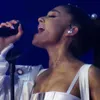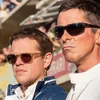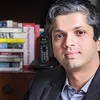Can art make you smart? Smriti Rajgarhia, Director, Serendipity Arts Foundation, on how art festivals promote cultural diversity
In an in-depth conversation with YS Weekender, Smriti Rajgarhia, Director, Serendipity Arts Foundation, talks about the role of art and design in society, how her art festival is shaping up this year, and why you must all head to Goa next month.
In an in-depth conversation with YS Weekender, Smriti Rajgarhia, Director, Serendipity Arts Foundation, talks about the role of art and design in society, how her art festival is shaping up this year, and why you must all head to Goa next month.
Edited excerpts below....
YourStory Weekender (YSW): What was the vision behind founding the festival, and how is it being fulfilled?

Smriti Rajgarhia
Smriti Rajgarhia (SR): Sunil Kant Munjal, Chairman of Hero Enterprises, has been a supporter of the arts for many years as Founder and Chief Patron of Serendipity Arts Trust. The idea of the foundation existed much before it was officially started in 2014. Its intention is to facilitate an environment for art production, and that has been the main force behind all the different projects conducted in the past three years, including the Serendipity Arts Festival.
The Foundation connects the past, present, and future of art, and increases the interaction and collaboration with the public. It constantly questions the dialectic between tradition and modernity. The Festival was launched in 2016 as an outlet and a platform to turn that vision into a reality.
Our region is rich with diverse cultural practices and we needed scale to express this, and that is really the idea behind this initiative. The festival challenges boundaries and redefines the idea of engagement with the arts. It shapes newer artistic pursuits while upholding the diversity of our cultural heritage and connecting us to our roots. It welcomes people of all ages, backgrounds and geographies.
The layered approach enables collaboration, whether it’s public and private, urban with the arts, or just between disciplines. We have seen some beautiful projects arise out of this initiative.
YSW: How many artists have been featured over the years at your festival?
SR: We have worked with artists across the subcontinent and beyond; the count so far has been more than 4000. The intention was never to look at numbers, but to look at what is that we would be proud to present, or how we can support an experiment without fearing failure.
YSW: What does art mean to you?
SR: This is a very deep and almost an existentialist question! Art changed my life. It made me see what I would ignore, it made me notice the mundane, and helped me become the person I am today. For me, it has been all-encompassing.
YSW: What kinds of feedback have you received from artists and attendees in the past?
SR: Most people, I think, really enjoy the festival. We often hear words like ‘festive’, ‘rich content’, ‘engagement’, ‘experience’, ‘experimental’, etc. We are still learning and experimenting with the way we want to program the festival for a holistic experience. But overall, I see smiling faces at the festival and it does feel nice!
YSW: What is the theme of the festival this year, and how is it being manifested in the various tracks?
SR: When we started the festival, we had consciously decided not to give it a theme. We didn’t want to restrict the curators and we didn’t want the content to be chosen to fit in a large thematic. There are many thematics that run through each curator’s project. Those chosen themes often intersect to automatically represent the current world view. That’s what is exciting for us to see unravel.
YSW: Who are some of the curators this year, and how were they picked?
SR: The curators for the 2019 sections by theme are: craft (Pramod KG and Kristine Michael), music (Aneesh Pradhan and Sneha Khanwalkar), theatre (Atul Kumar and Arundhati Nag), dance (Leela Samson and Mayuri Upadhya), culinary arts (Rahul Akerkar and Prahlad Sukhtankar), visual arts (Dr. Jyotindra Jain and Sudarshan Shetty), and photography (Rahaab Allana and Ravi Agarwal).
We also have several special curators like Nancy Adajania, Anurupa Roy, HH Art Spaces, Harkat Studios, St+art India Foundation, Aradhana Seth, Vivek Menezes, and Vidya Shivadas, and FICA.
YSW: What is the artist selection process this year?
SR: Our festival is a curated arts festival and that is how it was designed. Each of the curators are given a set of mandates of the foundation. They propose projects to us that address these and are overall a part of the vision of their idea of the festival. Within each project, they conduct research and then approach artists that fit their intention.
For example, Sudarshan Shetty’s project addresses the idea of art that arises out of need, and he chose to work with inventors because for him, they were artists and we were more than happy to support him. It fits the need to create new avenues for creativity and experimentation. And we are so glad that we are going to be showcasing a project of this nature this year.
YSW: In addition to having multiple tracks and themes, how are you promoting cross-connections between them?
SR: The space in which the festival is hosted, both physical and virtual, is the space for interdisciplinary connections. It’s within this space that we promote conversations and hope that many collaborations will be forged. These aren’t forced collaborations, but we want to be a platform that can aid and abet the coming together of disciplines, artists and the creative community to engage and enjoy the arts together.
YSW: Who are some of your partners this year, and what is their involvement?
SR: Our co-presenting partner this year is Havells, and our other partners are GMR and HDFC Ergo. Our institutional partners are FICA, HH Art Spaces, Harkat Studios, St+art India Foundation, and Access for All.
We have also found support over the years from Pro Helvetia, Institut Francias, and this year, we also have the Spanish Embassy joining us. Coca Cola has been associated with us right from our inception in 2016, and has brought Coke Studio to the festival.

The festival will be held in Panaji, Goa
Apart from this, the Goa Government has been very accommodating over the years along with Goa Tourism and the Dalmia Group, who are our patrons and have contributed to our growth over the years.
YSW: What kinds of engagements are there with art schools and institutes?
SR: As a foundation, we understand that if we want to make an impact, we need to address the initiation of the young into the arts. From schools to colleges, to a robust volunteer programme – the intention is to expose them to excellence in the arts and get inspired.
It’s not a purely instructional engagement but an experiential one. We work with schools through our partners and this year, we had a special theatre outreach project with the children of the local communities.
YSW: What do you see as the connection between arts/aesthetics and design, and how can they reinforce each other?
SR: Given my background, it’s very difficult to me to distinguish. Personally, for me, they all co-exist in the same space. Both art and design communicate and send out message through different means, mostly towards the same goal.
Being an architect and having spent many years in the arts, for me, one informs the other and forms the anti-thesis for the other, moving towards the development of ideas.
YSW: How would you define success for yourself as a festival director?
SR: It’s very difficult for me to answer this question! I don’t think it’s a success, but I feel happy and content seeing people smiling and satisfied at the festival when they find it easy to navigate, or appreciate our messaging.
YSW: What are some other art projects you are involved in?
SR: We have initiatives that happen throughout the year, which combine residencies, grants, screenings, and open studios. Our own art residency is Dharti, which has been running for the last three years and will be featured in the festival this time.
We have also formally started the Serendipity Arts Grants this year, where we aim to offer support to individuals who need to travel to attend an artist residency; create a new theatre piece; or for research and documentation of projects within the visual and performing arts.
YSW: Many of our readers are techie founders of startups. How would you say an appreciation of art and design could help them?
SR: I speak from experience, engaging with the arts changed the way I saw the world, made me think deeper, and think in a more structured manner. Design helps you understand communication and I have always believed good design can change lives.
Without looking for direct benefit, I feel any engagement with art and design can only prove beneficial, even if one is just a silent observer!
YSW: How do you see this festival evolving over the coming years?
SR: The festival has grown so fast in the past three years, and with this edition, we have been super ambitious. In the future, we want to make a robust system that can help anyone plan, host, and manage a festival with ease.
We want to create a movement in the arts ecosystem of the region by encouraging more initiatives and opportunities for the arts. And we hope that Serendipity Arts Festival expands to other cities and states in the coming years.
YSW: How can art appreciation be improved in India?
SR: Education for this has to start at the school level. The most important aspect is to help children understand what art appreciation is, not just through instructional discourse but through experience. That is really the first step.
YSW: What are some trends in India’s art scene today?
SR: For every era, there are specific world views that really define the trajectory of the arts. It’s almost like the voice of the generation. In the past few years, awareness for the arts, festivals, and such initiatives have increased in the region.
Most of them are grappling with the same problems like accessibility to the arts, education in the arts, and many such gaps that need to be bridged. This informal sector, which is supported by patrons, institutions, and passionate individuals, is on a growth path, though not without problems and difficulties.
I am positive that in the future, many more such initiatives will start and create a movement as there has been an increase in the patronage for art institutions. Being an optimist, I see a positive future.
YSW: What are your recommendations to the audience on how to approach and interpret art?
SR: Just see it as you see it! There is no instruction on interpreting art. It’s what you feel about it and what you see it as. It’s something you enjoy through thought and introspection.
Many times, there is text accompanying the art, which can help you understand what goes through the artist’s mind or the curator’s mind. That is a tool for your personal interpretation only.
(Edited by Saheli Sen Gupta)










